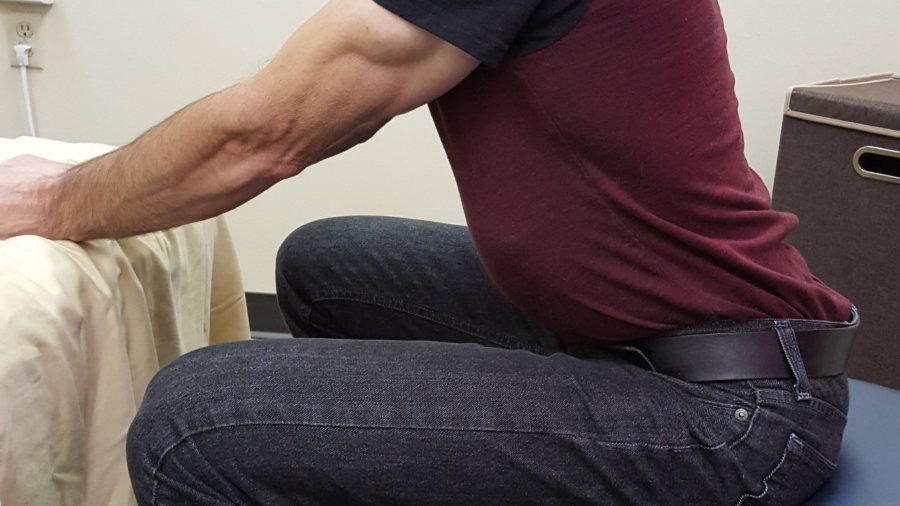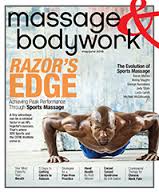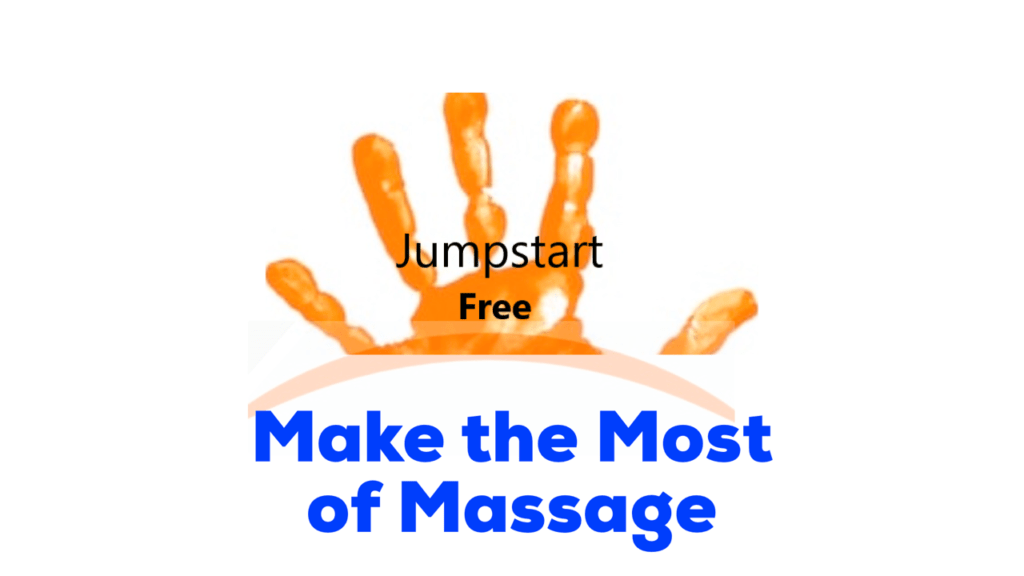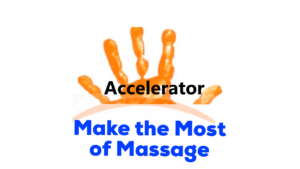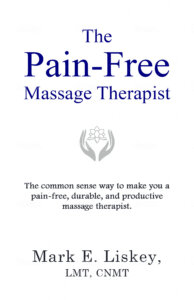If you struggle with pain around the neck and upper traps when doing massage, here’s one simple massage strategy that could help you out: sit down when you can.
Pain in the Trap Area
When the orthopedist diagnosed me with an unstable shoulder and cervical radiculopathy a while back, I knew I needed to change some things around or I would have to find a new career. At the time, pain symptoms kicked up in trap/levator scapulae area when I was doing detailed work and having to stand in one position for a long time.
Then one day I sat down to work the neck of a client who was prone. I rested my forearms on my knees and the pain in the trap/levator scapulae area practically went away. But as I pressed, the pain returned.
To me, this pain could be associated with muscular contraction of my neck and upper shoulders and/or a change in my shoulder/neck positioning. I wondered how I could take “contracting my shoulder and neck muscles” out of the equation when doing seated massage.
Over the course of the next year, I discovered the other piece of the puzzle: leaning.
Seated Leaning
I had become efficient with leaning to generate pressure when standing, but it didn’t cross my mind to lean when I was sitting and working. When I eventually did, the trap/levator scapulae area stopped acting up.
The hinge for leaning when seated is the waist. When you’re leaning from the waist, the weight of your torso will sustain the pressure. If you’re not leaning, your shoulder and arm muscles will be working hard to sustain the pressure.
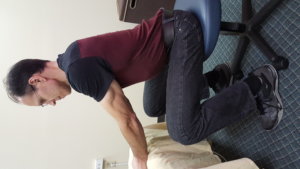
Seated massage is ideal for doing prone cervical work. In this video, I break down the process into 3 steps: sit, support arms, and lean: Seated Massage Body Mechanics Video.
Sit and Work Using a Massage Tool
I would strongly recommend experimenting with a massage tool in the seated position. Specifically, I would choose to work with an L-bar because it has a longer shaft than the T-bar. The longer shaft will allow you to get into the cervical erectors easier.
When you use a massage tool like the L-bar while seated, you’ll be able to really focus your pressure because the end of the L-bar has a small surface area. This means that you’ll barely have to lean to generate appropriate pressure. I hardly feel like I’m working when I’m seated and leaning with my L-bar.
In this video–L-Bar Seated Massage Body Mechanics Video–I show how to sit, support, and lean when working the neck with an L-bar.
Create Your Own
There are many other ways that you could incorporate seated massage into your massage routine. Here I’m working the plantar side of the foot with my arms supported on my legs. From this position, I can easily get my pressure up to medium.
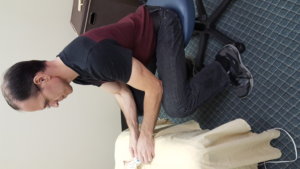
If I need deeper pressure, I would stand and support my arm and hand with my leg.
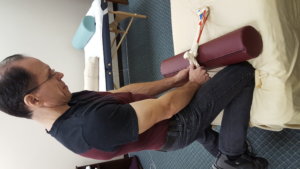
If you want to give your hands a break, try the same standing supported-arm technique with a T-bar.
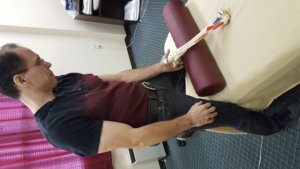
It’s Not Hard
There is only one way to change how your body feels when doing massage and that is to experiment. If you’re having trap area problems, try doing some of your work seated.
In my book, the three most important steps for seated massage are:
- Sit
- Support
- Lean
Once you get those down, think about adding “looking straight ahead”and you’ll put even less strain on your traps/neck.
Watch a Video Before You Start Your Next Client
For quick reference, here are the videos. They are short so that you can watch them during the time you allot for your client to get on the table.
Seated Massage Body Mechanics Video
L-Bar Seated Body Mechanics Video
Massage doesn’t have to hurt you. Keep experimenting. And if you need some help, let me know.
Can You Massage Pain-Free?
Yes.
Start by taking this pain quiz and you’ll get an instant video solution to your pain problem.
PAIN QUIZ
